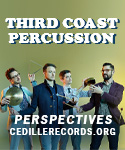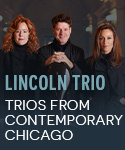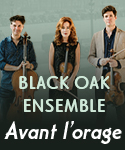Jean Martinon (1910-76), best known as one of the better conductors in an era when giants wielded batons, also was a prolific composer given his active podium career. These quartets are mature works; the first dates from 1946, the second was composed 20 years later. As one might expect, the ghosts of Debussy and Ravel hover in the background, but the language is resolutely mid-century modern. Its accessible atonality carries on a flirtatious fling with serialism but ultimately is anchored by abundant melodies and emotional probings just below the elegantly polished surfaces. All in all, that’s a pretty good formula for success and both works repay multiple hearings.
The Quartet No. 1 won the Bartók Prize in 1948, appropriate since Bartók’s influence is pronounced. A big piece, more than 30 minutes long, it never overstays its welcome. The opening unison flourish announces a major intent, and the yielding figures shortly afterward assure you that rhetoric will be balanced by lyricism. The poetry comes to the fore in the final movement, where a sensuously melodic violin line exchanges confidences with the other strings over a rhythmic plucked cello obbligato, to magical effect. The Quartet No. 2 is tighter, more concise, but still a large-structured work at almost 26 minutes. Its centerpiece is the third movement, marked “Grave e Scherzo”. A slow, grim introduction gives way to a skittish, slashing section where short-breathed fragments of melody pass among the strings, followed by a languorous, regret-tinged passage. At about seven minutes into the movement, the ensemble challenges yet another attempt at sustained melody by the violin, and the movement abruptly ends in rapidly plucked strings and a unison final chord. In the sympathetic hands of the young Ravel Quartet this movement–indeed, both complete works–emerge as important statements. Important music, excellent performances, and impactful engineering make for the strongest recommendation.
































